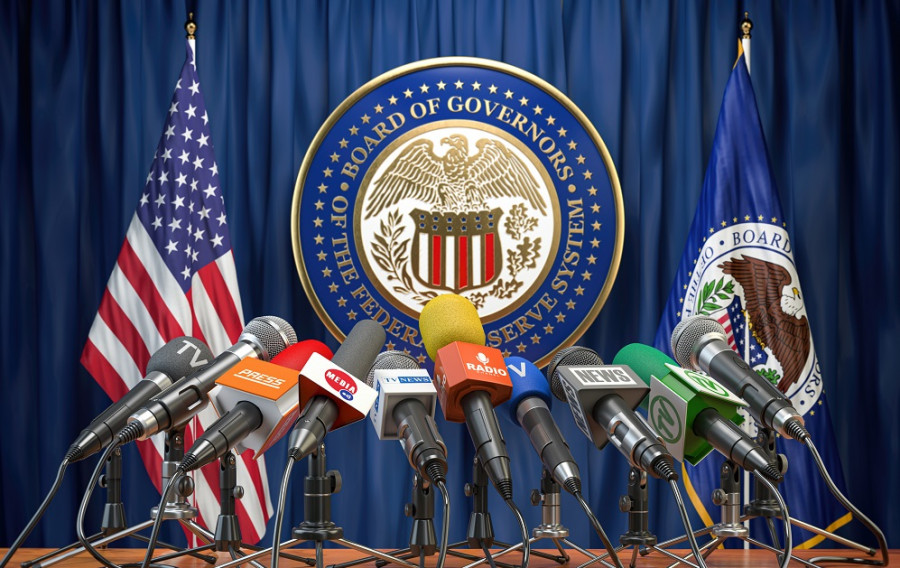The upcoming week promises to be volatile. The key events unfolding in the coming days will continue to resonate with currency market traders for a long time. Please take note of the EUR/USD pair's dynamics: over the past two weeks, it has been fluctuating within the 1.1000 range yet has been unable to determine a decisive movement. Buyers have been attempting to reach the 1.1100 target, while sellers have tried to approach the 1.0900 zone, but both efforts have been in vain.
The "shadow of the Federal Reserve" looms over market participants, forcing them to be extremely cautious. The market is still tormented by doubts about the pace at which the U.S. central bank will ease its monetary policy. The suspense will be resolved in just a few days—on September 18—and the compressed spring of expectations will finally unravel. The only question is: in favor of EUR/USD buyers or sellers?

Let's step back from the intraday and even weekly price fluctuations and look at the monthly EUR/USD chart. We can see that the pair has been showing bullish momentum for the third consecutive month. It's not as though the buyers have moved steadily upward—significant price pullbacks have accompanied this upward trend. In July, the bulls entered the 1.0900 range but finished the month at 1.0826. The August high was recorded at 1.1202, but the month closed at 1.1047. The high for the current month is marked at 1.1152, though now we are within the 1.1000 range.
The upcoming week will be decisive for EUR/USD. As in previous months, the pair will pull back only to climb upward again, or it will resume its upward trend without hesitation. The Fed will resolve this dilemma. All other fundamental factors will play a secondary role for EUR/USD.
Over the past five weeks, market expectations regarding the Fed's next moves have fluctuated significantly. After the release of July's Nonfarm Payrolls, a "Black Monday" occurred when global stock markets crashed. At the height of this crisis, the probability of a 50-basis-point rate cut was assessed at 95%, according to the CME FedWatch tool. Then, emotions cooled down, and the chances of a 50-point scenario decreased. Following the release of August's Nonfarm Payrolls, which were not as disastrous as July's, the probability of a 50-basis-point rate cut dropped to 18%.
But ahead of the Fed's September meeting, the situation changed again. Firstly, the August reports on CPI and PPI growth reflected a further slowdown in overall inflation. Core inflation has stalled (as has the core PCE index, which has been coming out at the same level for three consecutive months), but it is not accelerating.
Secondly, during the "quiet period," several former Fed members, who are not bound by the rule of mandatory silence, spoke out. Esther George and William Dudley urged their former colleagues to approach monetary policy easing aggressively. Moreover, influential publications such as the Financial Times and The Wall Street Journal, citing their sources, reported that the Fed is still wavering between a "big or small step." Specifically, the WSJ quoted a former senior adviser to the Fed chair, Jon Faust, who said the decision to cut rates by 50 basis points "remains a subject of debate."
These verbal signals have balanced the scales. According to data from CME FedWatch, the probability of a 50-basis-point rate cut currently stands at 50%.
In other words, the odds are now viewed as 50/50.
What does this mean? This means that any decision by the Fed will trigger substantial volatility for the EUR/USD pair (as well as other dollar pairs).
In general, there are three possible scenarios. According to the first scenario, the Fed lowers the rate by 25 bps and delivers cautious rhetoric, indicating that future actions will depend on the situation, with no predetermined trajectory for rate cuts. Let's call this the "moderately hawkish" scenario. Its implementation would support the U.S. dollar, and the EUR/USD pair would likely drop into the 1.09 range, with the potential to reach the support level at 1.0890.
The second scenario involves a 25-basis-point rate cut with the announcement of similar decisions in November and December—essentially, two more 25-point cuts within 2024. This "moderately dovish" scenario would pressure the greenback (in this case, the EUR/USD pair would return to the 1.11 range).
And finally, the third scenario—the "ultra-dovish" one. This envisions a 50 bps cut and the announcement of further rate cuts at one of the upcoming meetings. In this case, the EUR/USD pair would rise and likely settle into the 1.12 range.
Thus, the fate of the EUR/USD pair lies in the hands of the Fed. All other fundamental factors will play a secondary (supporting) role.
The material has been provided by InstaForex Company - www.instaforex.com #














 Download NOW!
Download NOW!
No comments:
Post a Comment